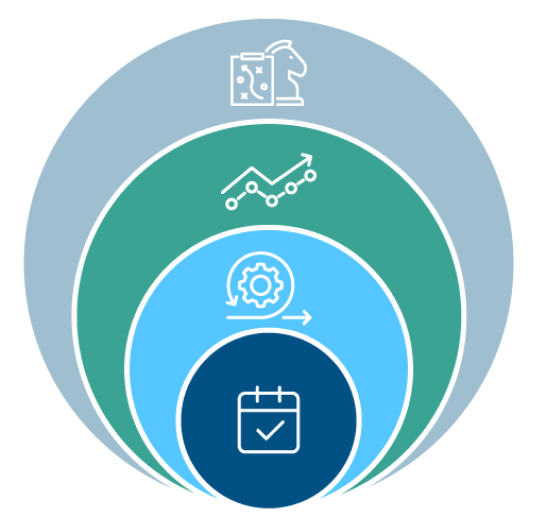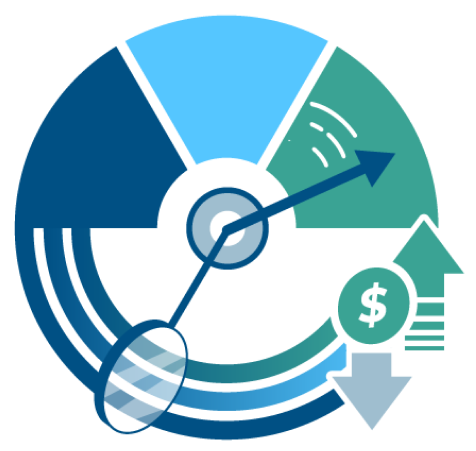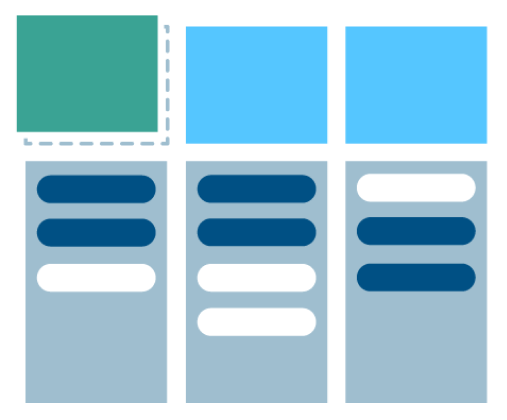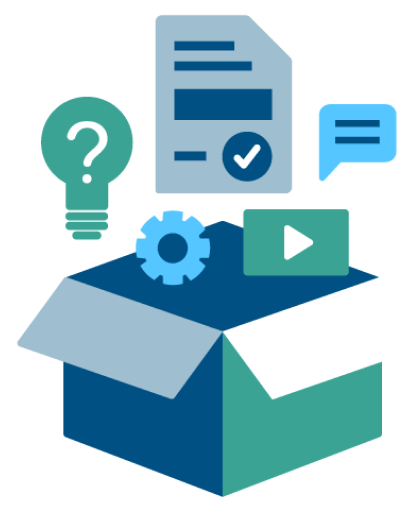Agile Delivery
FAS-IT has adopted Agile-driven approaches in order to efficiently deliver modernized solutions. This section of the Playbook aims to help you understand the key concepts of Agile, as well as providing tools, templates, Jira Apps, and links to the FAS Agile community and to advanced training resources. Explore the resources below to familiarize yourself with Agile methodologies and the ways in which GSA incorporates Agile methodologies into their work.
Attention: Updates Coming to Agile Delivery
Major updates to this section will be published in the coming weeks. Initially, the landing page has been redesigned to organize the content into simpler, easier-to-understand sections to meet the needs of both those who are Experienced with Agile and those who are New to Agile. Each section below contains links to helpful content that relates to the overarching theme of the section.
Eventually, new pages will be published to correspond to the sections below and links to old content will be retired. If you have any questions about this update, please contact the COMET AEA team at fas.it.aea@gsa.gov.
Before You Get Started
For those who already have familiarity and experience with Agile delivery, the sections below will be helpful in developing an understanding of how FAS has incorporated and implemented Agile principles into everyday development work.
The Jira and Confluence section describes how FAS has leveraged Jira and Confluence to support Agile practices, including for writing stories, planning sprints, and building portfolio epics. This section also contains lots of helpful training and information about specific use cases and add-ons that can be leveraged in Jira.
The Resources section contains a wide variety of trainings and other tools that may be useful for those already accustomed to Agile development principles, including templates for key activities in the Agile process, training materials from the FAS Agile Community of Practice, and useful Quick Tips on Agile methodologies.
Agile is considered an alternative approach to traditional project management or product development. It can be summarized as a value-based, iterative approach under which requirements and solutions evolve through the collaborative effort of self-organizing cross-functional teams. Agile advocates adaptive planning, evolutionary development, early delivery, and continuous improvement, and it encourages rapid and flexible response to change. Success in Agile is based on an attitude of “servant leadership” and focuses on the entire team, both Business and IT, not just developers. As teams work to solve large, complex problems, teams must “be(come)” Agile and not just “do” Agile.
Though it arose out of software development practices, Agile is not just a software-development framework. It is neither methodological nor prescriptive; there is no exact way to become Agile. There are best practices and popular approaches, particularly Scrum. However, Agile is not synonymous with Scrum (or Kanban, TDD, etc.) or even a specific tool (i.e. JIRA, Rally, etc.). The overall goal of Agile is to encourage collaboration, accountability and ownership across the team, and provide transparency and visibility throughout the process.
For those who are new to Agile, the Agile Values & Principles along with the Benefits of an Agile Culture are fundamental sections to become familiar with. Other sections, like the Team Member Roles and the Agile Framework, are helpful in terms of building an understanding of how FAS approaches Agile on a more tactical level. Additionally, the Requirements & Criteria and Performance Measurement & Metrics sections provide helpful guidance for incorporating Agile practices and ideas into a team’s day-to-day work.
Agile Topics and Concepts

Agile Values & Principles
Agile Values:- Individuals and interactions over processes and tools. Agile is more about transparent interactions than technology.
- Working software over comprehensive documentation. Create something usable quickly to enable faster customer feedback.
- Customer collaboration over contract negotiation. Ensure customer buy-in between Business & IT, with marketable visibility.
- Responding to change over following a plan. Leave room for emergent solutions and better respond to change.

Benefits of an Agile Culture
Many other areas outside of Technology have found success in developing an Agile culture, including Manufacturing, Marketing, Legal, Customer Support, and more recently, Learning Design and Human Resources. The benefits of an Agile culture provide more customer-focused efforts, increase communication, enable change, improve quality of delivery, provide a more responsive environment, and increase both transparency and visibility.
The result, or the answer to “What’s in it for me?!” rather - is additional cost-savings and more informed spend; greater visibility with executive leadership; empowered, self-organized teams; work that is broken down into smaller, achievable increments; and shared responsibility between Business and IT.
In GSA IT, we are currently pursuing Agile adoption through the formation of Scrum pilot teams that support the Agile Investment process. “Agile Investment” is a phased approach to piloting potential solution investments that create a stronger partnership between the Business and IT; thereby increasing collaboration, providing faster solution delivery, increasing transparency, reducing risk, improving overall GSA IT investment spend, and increasing business value. Read more about these benefits on the Tech @ GSA site.

Team Member Roles
Three roles are essential to success with Agile:- The Product Owner identifies the "Why" — translating the backlog into consumable pieces, from initiative level down to story level
- The Engineering Team develops the "What" — Development, QA, and UX, and develops product backlog work aligned to defined Acceptance Criteria
- The Scrum Master leads the "How" — the development process, protecting the team, enabling them to become more efficient and predictable
For more information on these roles, visit the Essential Team Roles section on the Agile Quick Tips page.

Agile Framework - Planning and Sprints
The FAS Agile Framework incorporates four types of planning that facilitate more consistent and outcome-focused project execution and delivery:- Strategic Roadmap level, where the product owner develops a vision for the product's future and aligns features and releases with that vision.
- PI Planning level, the product manager leads out in deciding what features or enhancements will be developed in the ensuing 1-3 months.
- Sprint Plan addresses the organization of what will be worked on in the short term as part of the PI Plan and the overall roadmap.
- Daily Plan sets the priorities for each day of the sprint and allows the team to adapt to short-term needs and constraints.

Requirements and Criteria
In Agile, work in Initiatives is broken down into Issue Types:- Portfolios
- Portfolio Epics
- Epics
- Stories
- Subtasks

Performance Measurement & Metrics
FAS-IT is rolling out an initial set of metrics with the goal of evolving an effective practice of collecting valuable data, communicating it, and using it to inform decisions.- Productivity measured in Cycle Time
- Quality measured in Escaped Defects
- Predictability measured in Planned-to-Done
- Team Stability measured in Team Morale and Turnover

Jira and Confluence
GSA has invested in Jira and Confluence, tools by software company Atlassian that support Agile software development.
Jira is designed to help teams of all types manage work. Originally, Jira was designed as a bug and issue tracker. But today, Jira has evolved into a powerful work management tool for all kinds of use cases, from requirements and test case management to agile software development.
Confluence enables teams to collaborate in a Wiki-like Web environment ideal for creating and sharing requirements documentation, files, illustrations, and more.
COMET BPA holders and vendors are to use – in alignment with FAS guidance – the GSA IT instance of the Atlassian stack (Jira, Confluence and others). They are the standard, enterprise-wide Agile Lifecycle Management (ALM) tools for GSA FAS.

Resources
For those more experienced with Agile, there are several helpful resources and tips on this page to help team members get familiar with how FAS-IT and GSA are implementing Agile principles in their work.

